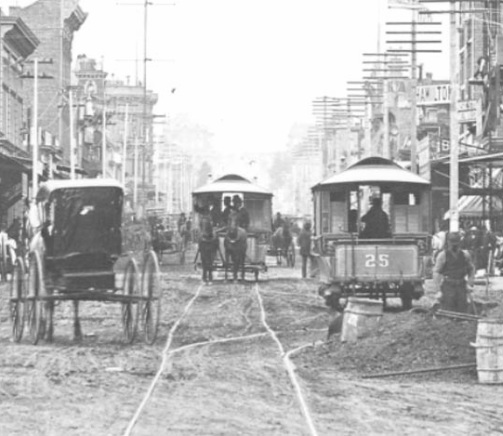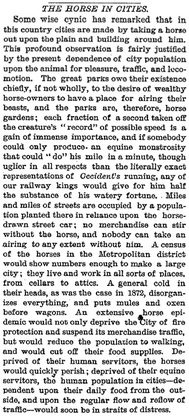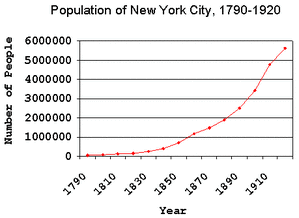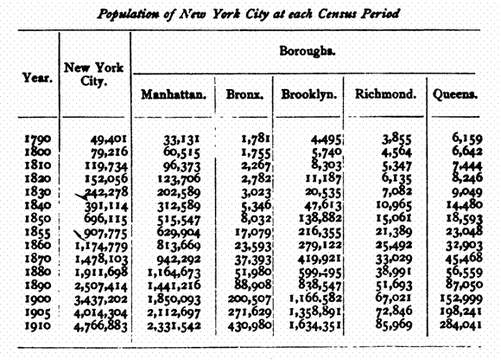19th Century Transportation
"Deprived of their human servitors, the horses would quickly perish; deprived of their equine servitors, the human population in cities - dependent upon their daily food from the outside, and upon the regular flow and reflow of traffic - would soon be in straits of distress."
|
|
Fire brigade in New York City. British Pathe. 1893. YouTube.
"In those days, there were no motor cars on the streets of New York and firemen went to blazes on horse-drawn engines." -British Pathe
|
GROWTH OF URBAN CENTERS
At the turn of the century, the number of people living in cities doubled, while the population of horses more than tripled. So many horses in a concentrated area required more hay and more space for stabling, while increasing the amount of manure produced. Conditions peaked in 1894 with the Great Horse Manure Crisis. |






